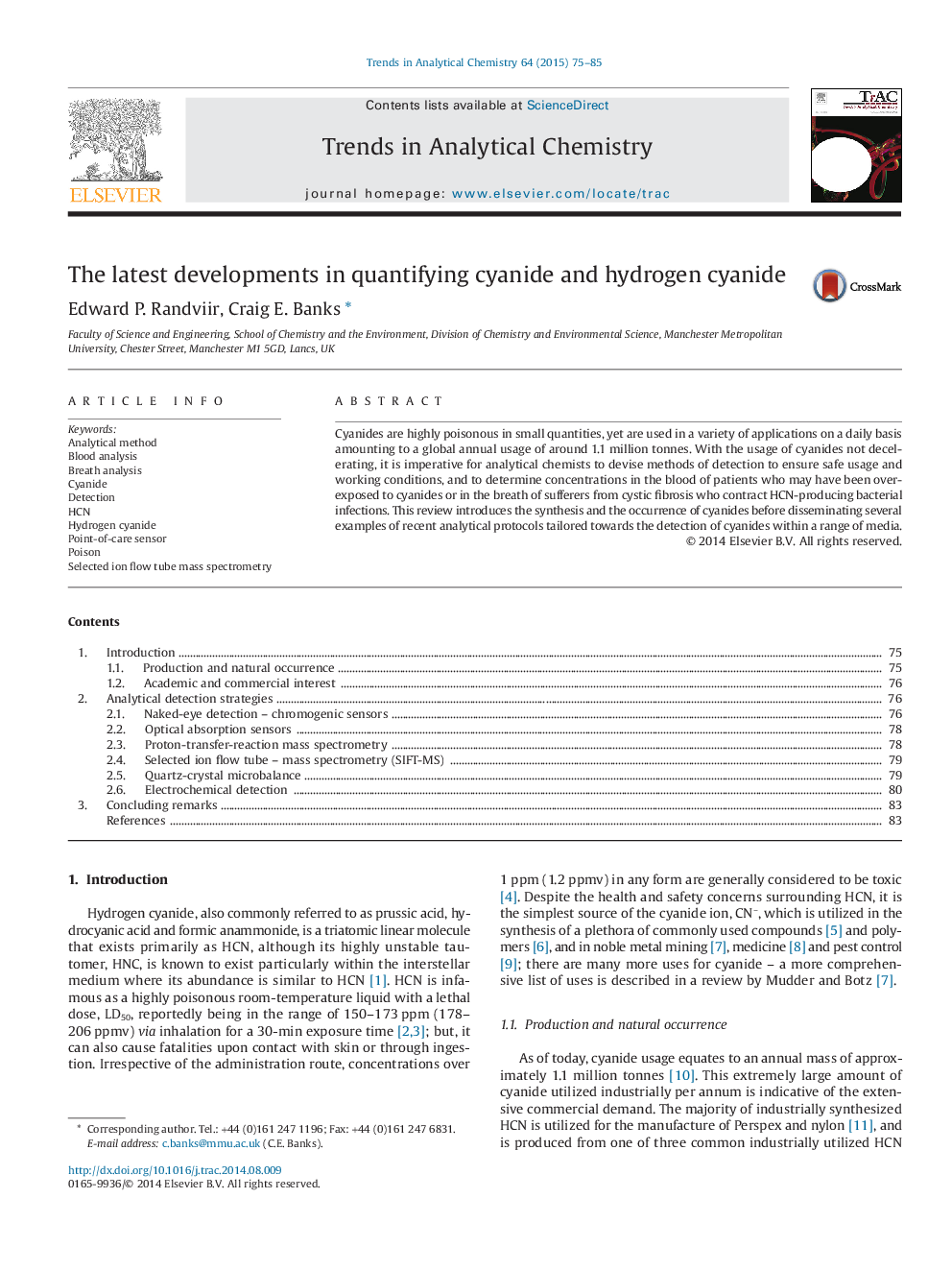| Article ID | Journal | Published Year | Pages | File Type |
|---|---|---|---|---|
| 1247769 | TrAC Trends in Analytical Chemistry | 2015 | 11 Pages |
•Analytical methods for cyanide ensure safe working and monitor poisoned patients.•Optical sensors are the most researched area for cyanide detection.•For point-of-care sensors, electrochemical methods hold promise for cyanide detection.•Selected ion flow tube mass spectrometry best measures hydrogen cyanide in breath.•Inexpensive electrochemical methods of cyanide detection favored for future research.
Cyanides are highly poisonous in small quantities, yet are used in a variety of applications on a daily basis amounting to a global annual usage of around 1.1 million tonnes. With the usage of cyanides not decelerating, it is imperative for analytical chemists to devise methods of detection to ensure safe usage and working conditions, and to determine concentrations in the blood of patients who may have been over-exposed to cyanides or in the breath of sufferers from cystic fibrosis who contract HCN-producing bacterial infections. This review introduces the synthesis and the occurrence of cyanides before disseminating several examples of recent analytical protocols tailored towards the detection of cyanides within a range of media.
